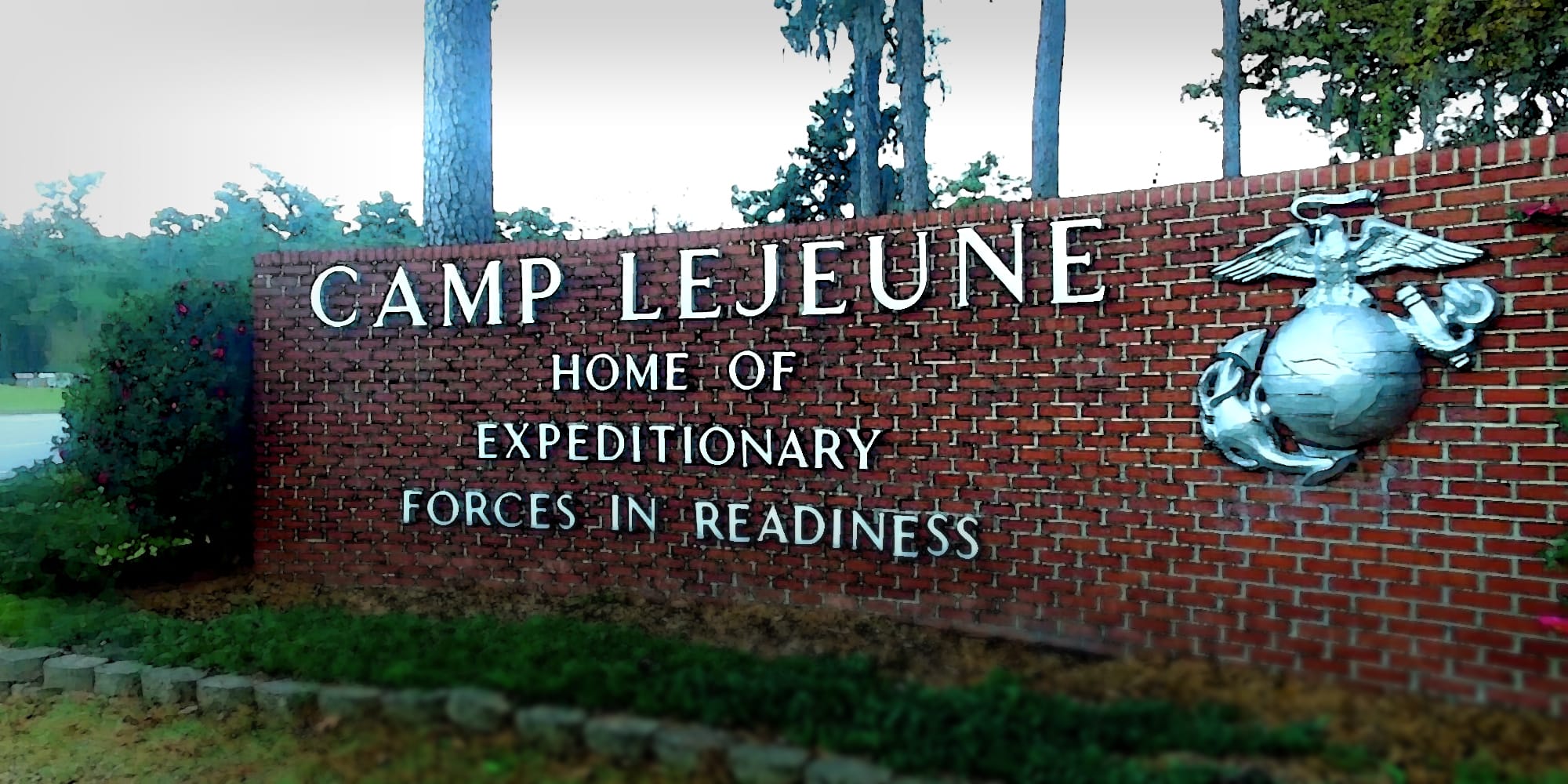Once President Biden signed the Honoring our PACT Act into law on August 10, 2022, the countdown began on a two-year window for veterans and civilians injured by toxic water contamination at Camp Lejeune to file claims. The Environmental Protection Agency designated the 156,000-acre Marine Corps Base as Superfund Site on October 4, 1989.
Anyone who lived or worked on the Camp Lejeune Marine Corps Base for at least 30 days between August 1, 1953 and December 31, 1987 and who were exposed to the toxic water at the base can now file a claim against the U.S. government. Claims are to be filed here on the U.S. Navy JAG website: Camp Lejeune Claims | Admiralty & Claims Division (Code 15) | U.S. Navy JAG Corps. Attorneys at DeGaris Law are ready to help navigate this complicated process.

Veterans will need to obtain their DD214 Form (Report of Separation issued by the Defense Department detailing each veteran’s condition of discharge) and VA Benefit summary during the process of the claim. These records can be requested via mail, but the easiest and most time efficient way is requesting them online. To request VA records, visit My HealtheVet. To request a DD214, visit milConnect.
Signing an affidavit stating that you were present on Camp Lejeune around a certain date, which you recall to the best of your memory, will help back up your claim.
A requirement for filing a claim under the Camp Lejeune Justice Act is establishing exposure to the contaminated water for a period of at least 30 days between the dates August 1, 1953 – December 31, 1987. There are two categories of injuries: presumptive and non-presumptive. Presumptive injuries are those that have been linked to certain chemicals found in the water at Camp Lejeune, therefore meeting the burden of proof. Non-presumptive injuries have not been formally linked to the chemicals found at Camp Lejeune, but cannot be ruled out entirely due to the catastrophically high levels of dangerous chemicals in the water. The Agency for Toxic Substances and Disease Registry (ATSDR) released a study, ATSDR Assessment of the Evidence for the Drinking Water Contaminants at Camp Lejeune and Specific Cancers and Other Diseases, in January 2017. This study lists presumptive injuries and which chemical has the strongest causal link to that specific injury. The easiest way to link injuries is to determine the chemical attributed to its causation in the ATSDR report and link that chemical with the area of base with high levels.
For example, certain areas of the base have stronger TCE levels than PCE, and vice versa. Certain areas of base have high concentrations of numerous chemicals– up to 400 times the amount considered safe for human consumption.
Another report released by the ATSDR in June 2007, Analyses of Groundwater Flow, Contaminant Fate and Transport, and Distribution of Drinking Water at Tarawa Terrace and Vicinity, U.S. Marine Corps Base Camp Lejeune, North Carolina: Historical Reconstruction and Present-Day Conditions Executive Summary (The Tarawa Terrace Report) concludes that former Marines and their families who lived in Tarawa Terrace family housing units during the period November 1957 through February 1987 received drinking water contaminated with the dry-cleaning solvent tetrachloroethylene (PCE) at levels above the current maximum contaminant level (MCL) of 5 ppb. Therefore, Tarawa Terrace had a high concentration of PCE. A specific cancer can be attributed to PCE by consulting the Presumptive Injury study in the ATSDR report. The cancer diagnosis can indicate a claimant spent time near the Tarawa Terrace water system.
Item 12 of the CLJA form requests a dollar amount for any property damage, personal injury, and/or wrongful death. Be aware that the amount entered will be the ceiling for damages if you end up having to file your case. Neither inflate your case value nor undercut your case value. For example, if you were to put $200,000 in the field “Amount of Claim”, this will serve as the limit for your damages in trial. If a jury were to award $20 million, but you capped your case low at the onset of the process, you will only be awarded the amount which you originally requested.
Because there are so many potential injuries, screening cases is the most important step. Cases should be screened to ensure the injury in question has not been included in another MDL that focuses on the same injury. For example, if your client trained at Camp Lejeune prior to fighting in Vietnam, you should ensure that the injuries you claim have not already been compensated under Agent Orange.
No. Camp Lejeune Justice Act claims will not affect your VA benefits in any way.
See our previous blog post for additional background information on toxic water contamination at Camp Lejeune. DeGaris Law attorneys have researched this claim process thoroughly and are prepared to file your claim today. Call us at 205-575-8000 for a free consultation.
"*" indicates required fields